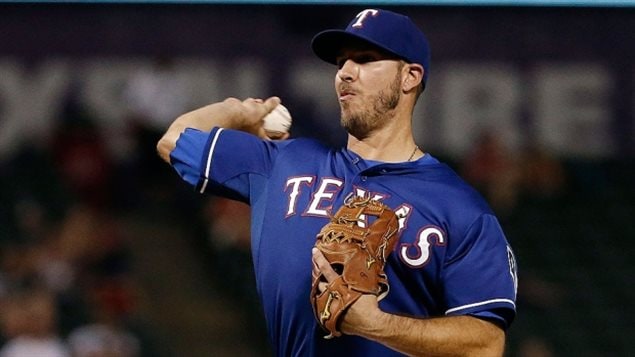In major league baseball, hurtling the hard ball at speeds up to 160km/h puts tremendous strain on the body.
In baseball, because of the potential for damage to joints, ligaments and muscles, pitchers are usually limited in the number of innings they throw for each game.
In minor leagues pitchers are limited by regulations so they don’t injure themselves. But a new study showed, simple limiting the number of innings played may not be the right strategy
Thomas karakolis is a PhD graduate in kinesiology from the University of Waterloo in Ontario, currently with the School of Engineering at the University of Guelph, and Visiting Fellow Human Systems Integration Section at Defence Research Canada
Listen
The study looked at 761 independent pitcher-seasons between 2002 and 2007. All pitchers were under the age of 25 and had pitched at least one third of an inning in major league baseball.
The study was published in The Journal of Sports Medicine and Physical Fitness.
It showed that the conventional practice by teams of restricting innings for young pitchers and slowly increasing the number of innings pitched over several years, in the theory that gives pitchers’ tissues sufficient time to adapt to the workload of a major league season, doesn’t hold true.
All our data shows that these strategies really make no difference in preventing injury,” saysThomas Karakolis, lead investigator on the study.
“Injury is the result of workload exceeding the capacity of the body’s tissues, so while counting innings is a tempting way to measure workload, it’s actually a very flawed method,” said Karakolis. “If coaches are looking for ways to prevent injury, simply limiting the number of innings is not the answer. They have to look at how hard a pitcher’s body is working during each inning, each pitch.”
Instead what is needed he says is are individual biomechanical studies for individuals as each person is different in terms of the stresses on their bodies and injuries.
As the pitches have become ever faster and harder in major league baseball , so to have the injuries with up to 25 percent of pitchers on the injury list each year.
“The injury rate for MLB pitchers is nothing short of unacceptable,” said Karakolis. “Clearly current methods for preventing injury aren’t working. We need a new strategy that will keep pitchers off the disabled list for good.”







For reasons beyond our control, and for an undetermined period of time, our comment section is now closed. However, our social networks remain open to your contributions.